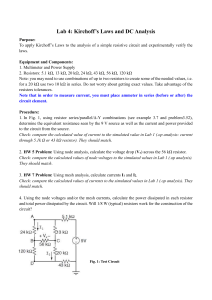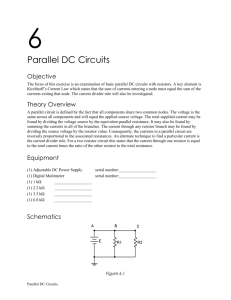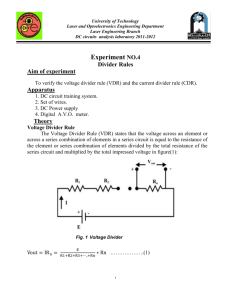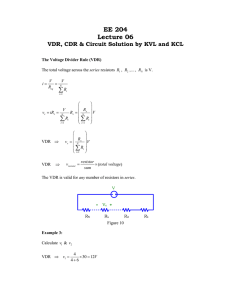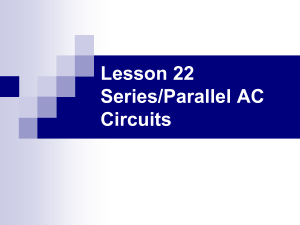Lab 1
advertisement
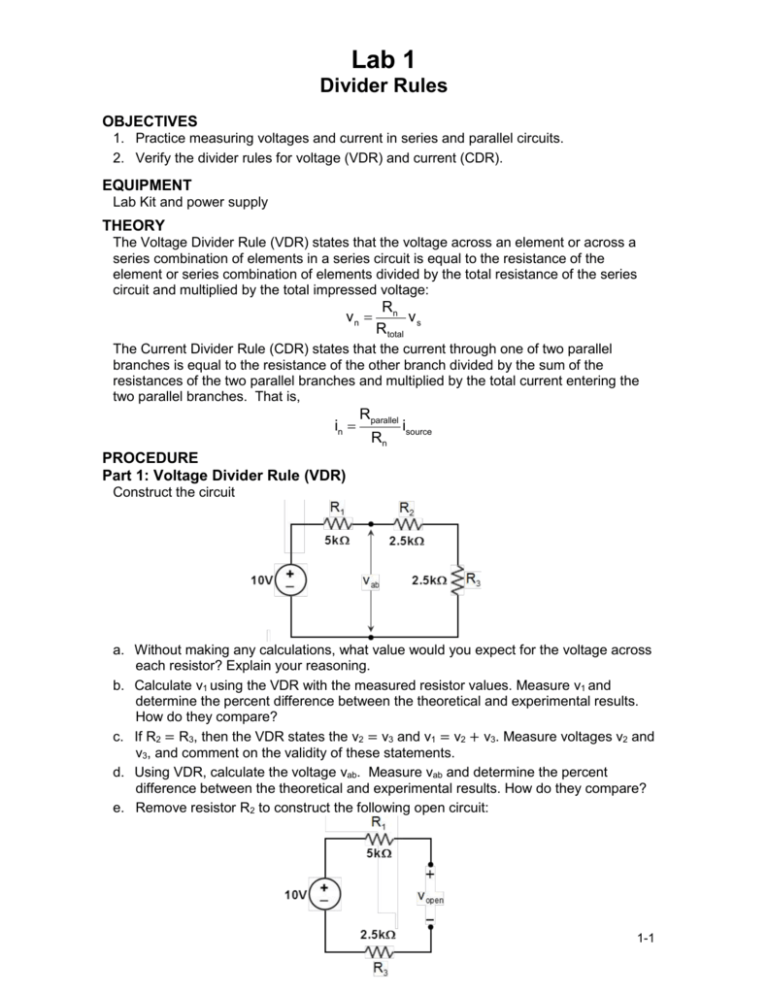
Lab 1 Divider Rules OBJECTIVES 1. Practice measuring voltages and current in series and parallel circuits. 2. Verify the divider rules for voltage (VDR) and current (CDR). EQUIPMENT Lab Kit and power supply THEORY The Voltage Divider Rule (VDR) states that the voltage across an element or across a series combination of elements in a series circuit is equal to the resistance of the element or series combination of elements divided by the total resistance of the series circuit and multiplied by the total impressed voltage: vn Rn vs R total The Current Divider Rule (CDR) states that the current through one of two parallel branches is equal to the resistance of the other branch divided by the sum of the resistances of the two parallel branches and multiplied by the total current entering the two parallel branches. That is, in Rparallel Rn isource PROCEDURE Part 1: Voltage Divider Rule (VDR) Construct the circuit a. Without making any calculations, what value would you expect for the voltage across each resistor? Explain your reasoning. b. Calculate v1 using the VDR with the measured resistor values. Measure v1 and determine the percent difference between the theoretical and experimental results. How do they compare? c. If R2 = R3, then the VDR states the v2 = v3 and v1 = v2 + v3. Measure voltages v2 and v3, and comment on the validity of these statements. d. Using VDR, calculate the voltage vab. Measure vab and determine the percent difference between the theoretical and experimental results. How do they compare? e. Remove resistor R2 to construct the following open circuit: 1-1 f. Using the measured resistor values, calculate the voltages v1, v2, and vopen using VDR. Measure voltages v1, v2, and vopen with the DMM and calculate the percent differences. Explain the reasoning behind the values of all the voltages. Part 2: Current Divider Rule (CDR) Construct the circuit a. Without making any calculations, what value would you expect for the current through each of the resistors? Explain your reasoning. b. Calculate the currents i1, i2, and i3 using the CDR from the measured value of iS. Measure the currents i1, i2, and i3. c. Based on these measurements, are your conclusions of part (3a) verified? Use a percent difference to compare the theoretical and experimental results. d. Set the maximum current coming from the power supply at 200 mA via a short. Place a short circuit across the 10kΩ-resistor to construct the following circuit: e. Calculate and measure the currents i1, i2, i3, and iSC using CDR. Measure these currents with the DMM and calculate the percent differences. Explain the reasoning behind the values of all the currents. Part 3: Challenge Circuit Construct circuit a. Calculate the voltages v1, v2, v3 and v4 using the VDR with measured resistor values. Measure the voltages v1, v2, v3 and v4 and use a percent difference to compare the calculated and measured results. How do they compare? b. Using the results of part (3a), calculate the voltage vab using KVL. c. Measure the voltage vab and use a percent difference to compare the calculated and measured results. How do they compare? Is the voltage vab equal to v1 – v3? Equal to v2 – v4? Explain your reasoning? d. Challenge: suppose now that a short is placed across the terminal points ab. Calculate the current iab through the short. Measure the current iab and use a percent difference to compare the theoretical and experimental results. How do they compare? 1-2



